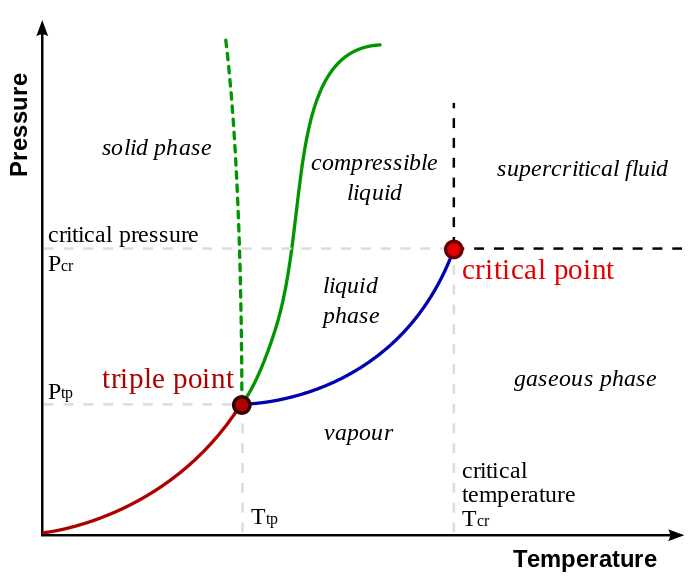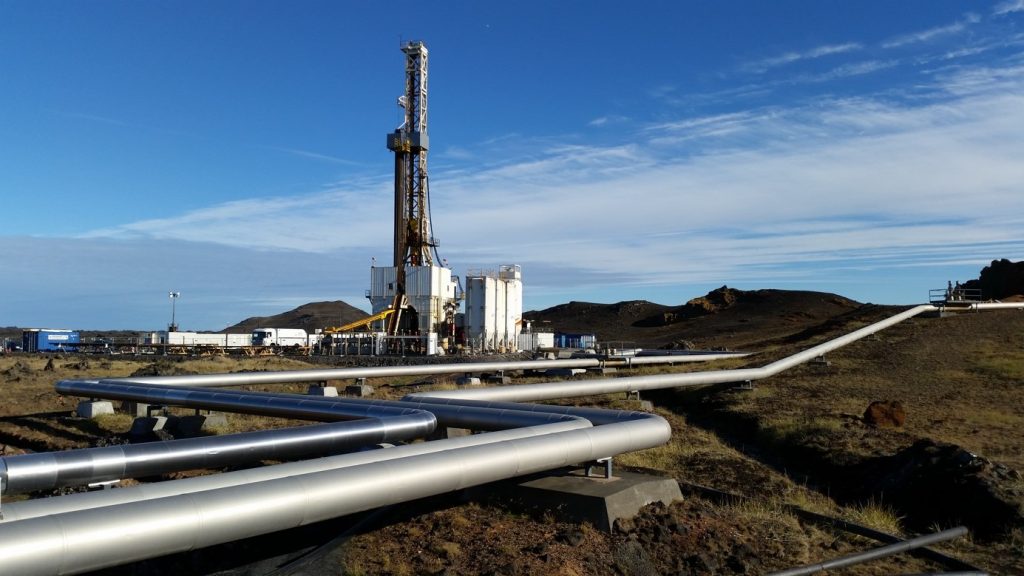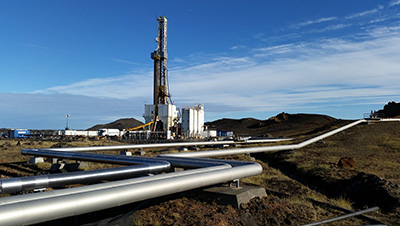Terms ‘supercritical’, ‘superheated’ and ‘super-hot’ cause great confusion within the geothermal world. To date, there is no clear definition available of what is considered to be a ‘supercritical’ or ‘super-hot’ geothermal resource. In the Oxford English Dictionary, the word ‘supercritical’ is described as ‘relating to or denoting a fluid at a temperature and pressure greater than its critical temperature and pressure’; whereas, the Academic Press Dictionary of Science and Technology explains the word ‘supercritical’ as ‘the mobile phase of a substance intermediate between liquid and vapor, maintained at a temperature greater than its critical point’. It can be seen, that depending on the source, ‘supercritical’ fluids might be regarded as exceeding critical temperature only or simultaneously exceeding critical pressure and temperature. This proves the great ambiguity of a ‘supercritical’ geothermal resource and its confusion within the scientific world.
To assume drilling into supercritical resources, one must always consider the chemical composition of the reservoir fluids present. The critical temperature and pressure increase significantly with salinity, transferring the supercritical conditions to much greater depths. The critical point of pure water is achieved at 374 °C and 221 bars and assuming boiling conditions starting from the well surface, corresponds to a drilling depth of approximately 3500 m. The critical point of seawater (i.e. with 3.5% NaCl) as indicated by Bischoff and Rosenbauer (1984) is reached at 405°C and 302 bars and corresponds to a depth of approximately 5300 m, assuming boiling conditions starting from the well surface. In the case of a geothermal reservoir with low or non-existent vertical permeability, pressure conditions may be governed by the hydrostatic pressure of a cold water column only, or by the lithostatic pressure, so that the critical pressure of the fluid will be reached at a depth of 2300 or 3000 m assuming seawater salinity (Elders et al. 2014). This phenomenon is confirmed by the existence of hydrothermal vents in the rift zones at the bottom of oceans expelling fluids at temperatures exceeding 400°C without boiling conditions occurring.
 Fig. 1. Phase diagram. The dotted region above the critical point is the supercritical fluid (source: Wikipedia)
Fig. 1. Phase diagram. The dotted region above the critical point is the supercritical fluid (source: Wikipedia)
Other researchers underline the significant influence of reservoir permeability and its great value to the amount of energy and volume of fluid that can be extracted from the geothermal resource. According to Scott et al. (2015), supercritical resources are those areas of a geothermal system, where reservoir permeability is higher than 10−16 m2 as well as the specific enthalpy and the temperature of water are greater than its critical point. Such definition avoids including pressure as a criterion for a supercritical resource and applies no distinction between ‘superheated’ (i.e. pressure conditions below critical point) and ‘supercritical’ (i.e. pressure conditions above critical point) resources. This explanation seems to be the most accurate, as currently there are no commercial geothermal fields that produce pure water only; thus, the pressure of 221 bars is not a very relevant criterion. Only a few drilling projects were able to simultaneously reach and confirm pressure and temperature of the geothermal fluid present higher than its critical point, i.e., the recent IDDP-2 well in Reykjanes (Iceland) and the Venelle-2 drilling venture in southern Tuscany (Italy). For instance, the well IID-14 in the Salton Sea Geothermal Field (USA) reached a temperature of 390 °C, which is several hundred degrees Celsius lower than that of any supercritical brine that could be present in that field with a total amount of dissolved fluids of approximately 25 000 mg/kg (Elders and Sass 1988; Ross 1991).
 Fig. 2. Drilling rig “THOR” during drilling the IDDP-2 well in Reykjanes, SW Iceland (source: Michal Kruszewski)
Fig. 2. Drilling rig “THOR” during drilling the IDDP-2 well in Reykjanes, SW Iceland (source: Michal Kruszewski)
Even greater ambiguity concerns the ‘super-hot’ geothermal resources. This term has been used in the projects such as GEMex where ‘super-hot’ geothermal systems are regarded as geothermal wells experiencing ambient temperatures higher than 380 °C, and the planned Newberry Deep Drilling Project (NDDP) where ‘super-hot’ resources were regarded as geothermal wells with temperatures higher than 400 °C (Cladouhos et al. 2018). Similarly, to ‘supercritical’ resources, ‘super-hot’ resources do not have a clear definition within the scientific community and remain ambiguous.
For more #GeothermalFactsandStats check back next week and follow us on all major social media platforms.
Article based on the study by Kruszewski and Wittig titled “Review of failure modes in supercritical geothermal drilling projects” published in Geothermal Energy (2018) 6:28 (doi.org/10.1186/s40517-018-0113-4).
References:
- Bischoff JL, Rosenbauer JR. The critical point and two-phase boundary of seawater 200–500 °C. Earth Planet Sci Lett. 1984; 68:172–80.
- Elders WA, Friðleifsson GÓ, Albertsson A. Drilling into magma and the implications of the Iceland Deep Drilling Project (IDDP) for high-temperature geothermal systems worldwide. Geothermics. 2014; 49:111–8.
- Scott S, Driesner T, Weis P. Geologic controls on supercritical geothermal resources above magmatic intrusions. Nat Commun. 2015; 6:7837.
- Elders WA, Sass JH. The Salton Sea scientific drilling project. J Geophys Res Solid Earth. 1988;93(B11):12953–68.
- Ross PH. Salton Sea scientific drilling project—final report. A summary of drilling and engineering activities and scientific results, The U.S. Department of Energy Geothermal Division. 1991.
- Cladouhos T, Petty S, Bonneville A, Schultz A, Sorlie CF. Super-hot EGS and the Newberry Deep Drilling Project. In: Proceedings of the 43rd workshop on geothermal reservoir engineering Stanford University, Stanford, California, February 2018.

